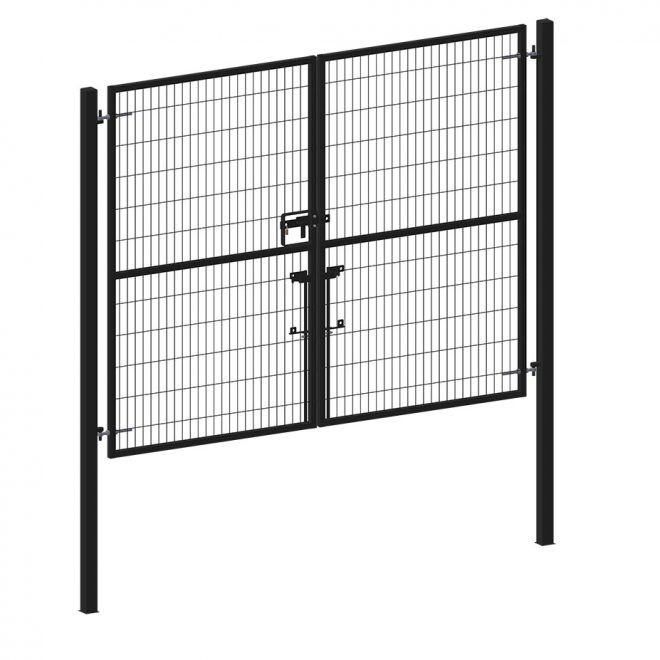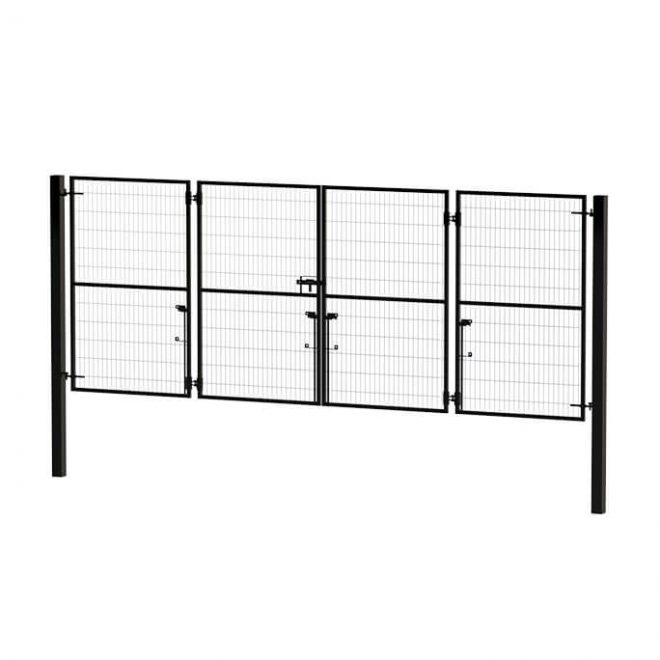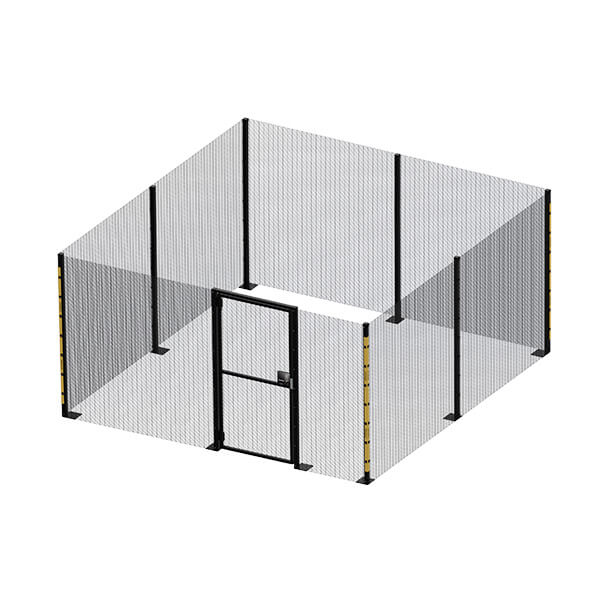Published:
Construction site theft and unauthorised access aren’t just minor disruptions—they can derail budgets, delay timelines, and expose contractors to costly liabilities.
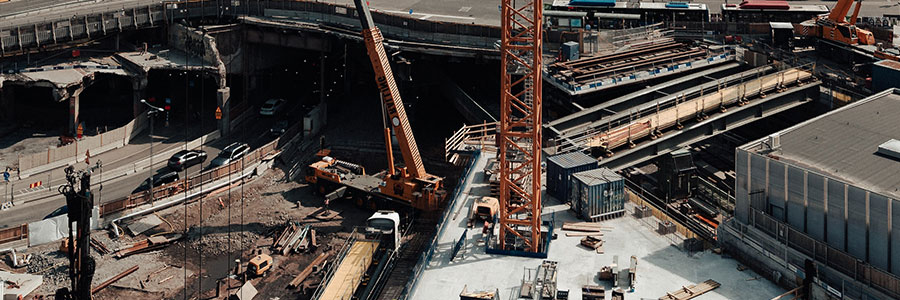
Equipment theft is often targeted and organised, especially when valuable plant and machinery are involved. In the UK, construction site crime costs the industry approximately £800 million each year. Metal theft accounts for 7,000 incidents a month, and in 2020, tool losses in London alone reached £17.5 million.
According to industry reports:
- 91% of construction professionals have experienced vandalism.
- 70% have suffered theft at least once a year.
- 24% have lost high-value vehicles or plant.
- 21% report theft occurring on a weekly basis.
The Construction Equipment Security and Registration Scheme (CESAR) also reveals that only around 5% of unregistered stolen equipment is ever recovered.
Construction Crime: The Current Landscape
The 2024 BauWatch Construction Crime Index reveals an escalating threat:
- 66% of respondents said that theft on construction sites has increased in the past year.
- 33% reported that crime had caused direct project delays.
“Construction sites have always attracted thieves, but with the resale value of goods going through the roof, they’re now prime targets. So, it’s worrying to see that some workers don’t feel confident about on-site security.” – Alexis Potter, Managing Director, BauWatch UK
On top of financial losses, unsecured sites can lead to breaches under the Occupiers’ Liability Act, exposing contractors to legal claims. A high-profile 2022 case involved the tragic death of a child who trespassed onto an unprotected construction site, resulting in a six-figure Health and Safety Executive (HSE) prosecution for the developer. In 2024, a man fell to his death from a tower crane in Leeds, underscoring the continuing risks of inadequate site control.
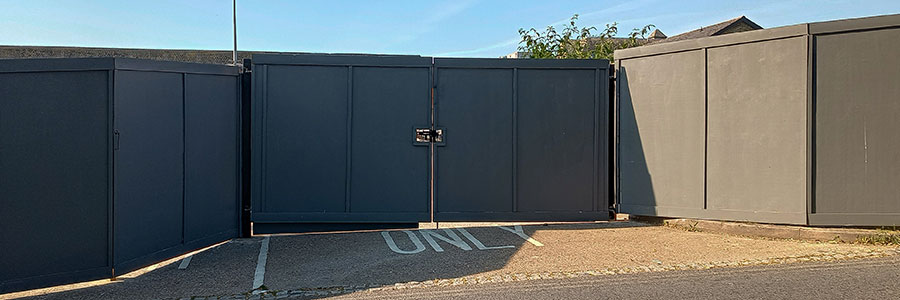
Health & Safety: Why Perimeter Security Matters
The construction industry continues to lead all UK sectors in workplace fatalities. Over the past five years, the industry has averaged 42 deaths annually—almost double that of agriculture and forestry.
The latest HSE figures for 2023–2024 show:
- 138 worker fatalities across all sectors.
- 50 of which were caused by falls from height (36%).
- 25 by moving vehicles.
- 20 by moving or falling objects.
Strong, well-defined site perimeters are a frontline defence in keeping unauthorised individuals out—and keeping workers safe.

How to Solve Site Security Challenges Effectively
A layered approach to site security is essential. Here’s what contractors should prioritise:
- Site Risk Assessment – Evaluate local crime trends, access points, public interface areas, and foot traffic zones. Tailor your security measures accordingly.
- High-Security Perimeter Fencing – Install perimeter fencing of at least 2.4 metres in height. Choose anti-climb welded mesh systems that offer strength, visibility, and deterrence.
- Durable, Secure Access Gates – Opt for heavy-duty hoarding gates with reinforced frames and anti-tamper features. Pedestrian and vehicle gates should be scalable as site layouts evolve.
- Monitoring and Deterrents – Implement CCTV towers with live alerts, motion sensors, anti-climb toppers, and security lighting to provide both visual deterrents and active monitoring.
- Inventory Logging and Site Protocols – Maintain digital asset registers, photo logs, and tool tagging. Theft response plans and secure storage areas significantly reduce losses and speed up recovery.

Limitations of Timber Hoarding and Heras Panels
While widely used, timber hoarding and temporary Heras fencing fall short in providing reliable construction site perimeter protection.
- Timber hoarding gates can warp, splinter, and deteriorate in bad weather. They often lack proper locking systems and structural integrity.
- Heras panels, although easy to deploy, are lightweight and can be lifted, toppled, or breached without much effort unless fully anchored.
In high-risk areas, relying on these methods alone increases the chance of site intrusion and equipment theft.
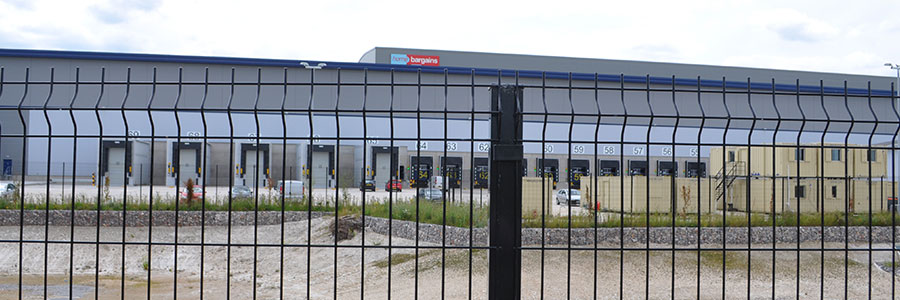
Metal Mesh Fencing: A Cost-Effective, Secure Alternative
Soaring timber costs have driven many contractors to seek more durable solutions. Steel mesh fencing offers superior performance and long-term savings.
- Anti-climb mesh at 2.4m height provides excellent perimeter protection with high visibility.
- Powder-coated finishes withstand weather, rust, and daily wear better than painted or untreated timber.
- Reusability across sites improves ROI and supports sustainability targets by cutting down on waste.
For contractors seeking robust, compliant fencing that performs over time, mesh systems are becoming the go-to solution for construction site security fencing.
Construction Gate Safety: Prioritising Visibility and Separation
Access gates are key vulnerability points—and must be treated as such.
- Visibility Matters – Gates should allow sight lines through for monitoring both foot and vehicle access. While solid timber infill may offer privacy, it also creates blind spots that conceal intruders or hazards.
- Pedestrian vs. Vehicle Separation – Maintain segregated zones using fencing, bollards, and clear signage. Use high-vis gear and enforce speed limits to protect workers near vehicle movement areas.
- Gate Swing and Access Design – Gates should open without encroaching on pedestrian walkways or traffic routes. Bi-fold and sliding gates can offer better clearance on tight sites.
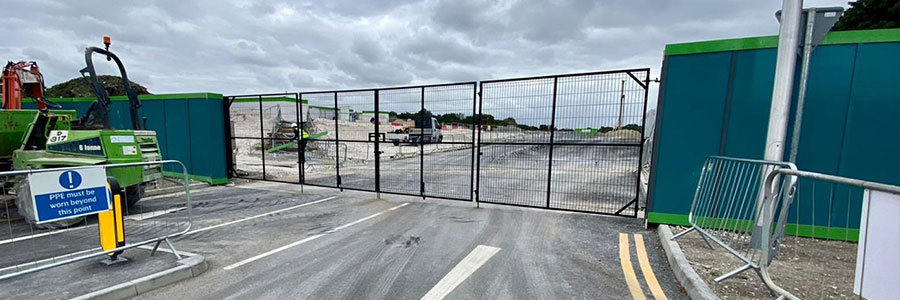
Temporary Hoarding Gates: Why Quality Matters
Construction hoarding gates must be:
- Tough – to deter unauthorised entry and withstand heavy daily use.
- Flexible – to adapt to changing site boundaries or evolving site access needs.
- Compliant – with health and safety laws, including safeguarding the public from vehicle movements and construction hazards.
Cheap or poorly installed gates are a known weak point—investing in high-quality gates prevents security breaches and regulatory non-compliance.
SiteGard – The High-Performance Temporary Site Gate Solution
SiteGard offers contractors a practical, secure, and reusable temporary gate system designed for real-world construction environments.
- Pedestrian gates (1.3m) and vehicle gates (up to 8m wide) offer full flexibility.
- Double-leaf or bi-fold options accommodate tight spaces or wide openings.
- Base plated or strapped posts suit both dig-in and non-dig sites.
- Anti-climb mesh panels with optional timber cladding provide both visibility and privacy.
- Built-in mounting holes allow quick attachment of hoarding without specialist tools.
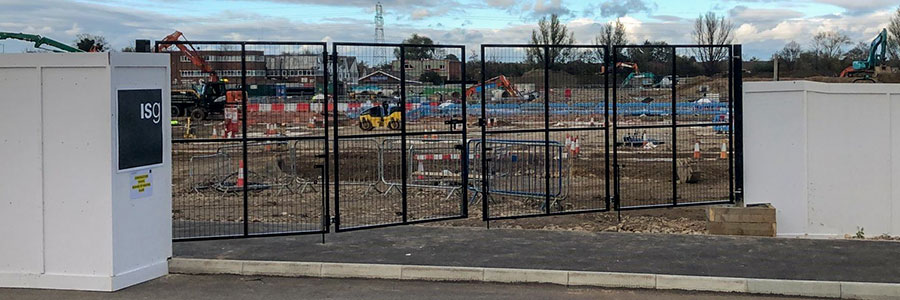
Securing Gates on Uneven or No-Dig Ground
On sites where digging is not allowed—such as urban locations, basements, or temporary demolition phases—SiteGard excels.
- Strapped post system secures gates to concrete blocks without compromising strength.
- Powder-coated, laser-folded steel straps match gate aesthetics while offering full structural support.
- Adaptable configurations allow for varied block positioning, even on uneven ground.
Even the largest bi-fold 8m gate can be stabilised this way, providing reliable protection where conventional posts are not viable.
The UK’s Trusted Choice for Temporary Construction Gates
SiteGard hoarding gates are trusted by top UK contractors for their:
- Durability under heavy site use.
- Ease of installation
- Adjustability as site access needs evolve
- Secure locking mechanisms, and
- Professional appearance that reflects well on the contractor and client.
We keep large quantities of standard gate sizes in stock for quick turnaround, with custom manufacturing available on request. Our team offers full support—from initial enquiry through to site delivery.
Secure your construction site perimeter today. Contact us to discuss SiteGard hoarding gate solutions or get a quote for your next project.




